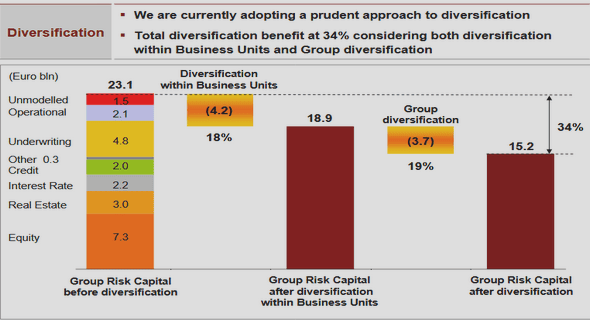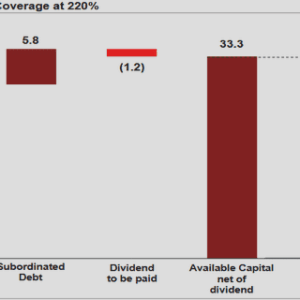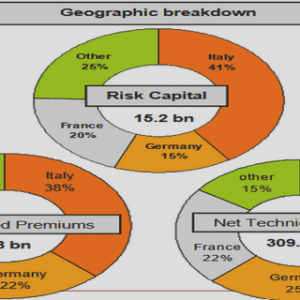(Downloads - 0)
For more info about our services contact : help@bestpfe.com
Table of contents
General introduction
1. Rationale of this thesis
2. Summary of literature review and research gaps
2.1. What is public participation and why it is important to evaluate it
2.2. The objective of my evaluation and my positioning
3. Research questions
4. Thesis structure and content
Chapter 1 – The capability approach: a theoretical framework to evaluate participatory processes
1. Introduction
2. A history of the capability approach and its academic, political, economical and social impacts
2.1. The first steps of the capability approach
2.2. Academic, political and economical uses
2.3. The capability approach applied to sustainable development and natural resources management
3. The capability approach: main concepts and definitions
3.1. The main concepts behind the capability approach
3.2. A focus on collective capabilities
3.3. A freedom decomposed
3.3.1. The scale of measurement of a collective capability
3.3.2. The three dimensions of a capability
4. The link between the capability aproach and participation
5. The capability approach put into practice
5.1. Theoretical specifications: the selection of valuable capabilities
5.2. Methodological choices: the capability space as the privileged scale to evaluate a participaptory process for water management
5.3. Which capabilities exactly to select? Focus on three capabilities to evaluate
5.3.1. Level of precision and appropriate number of capabilities to evaluate
5.3.2. The selection of capabilities related to collective action for natural resources management
5.3.3. The final three capabilities
6. Existing methodologies to evaluate capabilities: a review
7. Limits of and criticism addressed to the capability approach
8. Conclusion
Chapter 2 – A social experiment to evaluate capabilities
1. Introduction
2. Evaluating a participatory processes for natural resources management: an overview
3. A social experiment based on a role-playing game to evaluate participatory processes: definitions and precedents
3.1. Definitions
3.2. Role-playing games for evaluation: a review
4. The assets of a social experiment to evaluate capabilities
4.1. The controllability of the evaluation tool
4.2. The triangulation of the data
4.3. The transferability of the evaluation tool
4.4. The link between real-life freedoms and game-related freedoms
5. A social experiment to evaluate capabilities in practice: constraints and challenges
5.1. The challenge of an ex ante ex post evaluation
5.2. Other challenges to be tackled during the design of the evaluation tool
5.3. Limitations of the use of a social experiment to evaluate capabilities
6. Conclusion
Chapter 3 – The design of the evaluation apparatus CappWag
1. Introduction
2. Objectives and constraints: turning a game into a measurement tool
2.1. Ensuring the internal validity of the evaluation tool
2.2. Ensuring the external validity of the evaluation tool
2.3. Assumptions underpinning the design process
3. CappWag: A game to measure freedoms (Article “Simulation & Gaming”. Ready-to-use simulations)
3.1. Basic data
3.2. Introduction
3.3. CAPPWAG setting
3.4. The game structure
3.5. The simulation
3.6. Animation and Monitoring
3.7. Facilitator’s guide
4. The design process
4.1. A role-playing game as a space of freedom
4.1.1. Designing a scope of opportunities
4.1.2. The incentives
4.2. The design process of the game settings
4.2.1. A semi-abstract role-playing game
4.2.2. The physical features of the game
4.2.3. A role-playing game designed to measure capabilities
4.2.4. Design trade-offs
4.3. Data collection: the observation process and complementary tracking apparatuses
4.3.1. The external observations
4.3.2. The questionnaire
4.3.3. The debriefing
4.3.4. The individual interviews
5. Conclusion
Chapter 4 – The implementation of CappWag: results and analyses of two case studies
1. Introduction
2. Methodology of analysis
2.1. The scale of measurement of a collective capability
2.2. The three dimensions of a capability
2.3. The construction of the reading grid
2.3.1. Data selection and hierarchy
2.3.2. Qualitative data
2.3.3. Quantitative data
2.4. The differences expected between the ex ante and ex post phases
2.5. Analysis reading (abbreviations, legend, players’ tracking and anonymity)
2.6. CappWag in action: The implementation of CappWag on two case studies
3. The tunisian case study
3.1. Presentation of the Tunisian context
3.2. A synthesis of the state of the capabilities in the two groups
3.3. Analysis of the ex ante workshops
3.3.1. Being able to express oneself in front of a group
Group T1
Group T2
3.3.2. The collective rule-making and rule-implementation
Group T1
Group T2
3.3.3. The collective diagnosis of a problematic situation
Group T1
Group T2
3.3.4. Resources and conversion factors
Group T1
Group T2
3.3.5. A comparison of the ex ante collective capabilities between the two groups
4. The Master’s students case study
4.1. Presentation of the student context
4.1.1. A synthesis of the state of the capabilities for the FIVE groups
4.1.2. Analysis of the ex ante and the ex post workshops
4.2. The ex ante capabilities
4.2.1. Being able to express oneself in front of a group
Group S1
Group S2
Group S4
Group S5
4.2.2. The collective rule-making and rule-implementation
Group S1
Group S2
Group S4
Group S5
4.2.3. The collective diagnosis of a problematic situation
Group S1
Group S2
Group S4
Group S5
4.2.4. Resources and conversion factors
Group S1
Group S2
Group S4
Group S5
4.2.5. A comparison of the ex ante collective capabilities between groups S1, S2, S4 and S5
4.2.5.1. Collective rule-making and rule-implementation
4.2.5.2. Making a collective diagnosis
4.3. The ex post capabilities
4.3.1. Being able to express oneself in front of a group
Group S1
Group S2
Group S3
Group S4
Group S5
4.3.2. Collective rule-making and rule-implementation
Group S1
Group S2
Group S3
Group S4
Group S5
4.3.3. The collective diagnosis of a problematic situation
Group S1
Group S2
Group S3
Group S4
Group S5
4.3.4. Resources and conversion factors
Group S1
Group S2
Group S3
Group S4
Group S5
4.3.5. A comparison of the ex post collective capabilities between Five groups and their evolution over time
4.3.5.1. The collective rule-making and rule-implementation
4.3.5.2. The collective diagnosis of a problematic situation
4.4. The general impact of the IWRM course on the capability space of students
4.4.1. The impact of the theoretical course and the practical assignment
4.4.2. The impact of the students’ collective works and socialization
5. Conclusion
Chapter 5 – Assessing CappWag, an exploratory tool to evaluate capabilities
1. Introduction
2. Discussing the methodology of analysis of our results: the three dimensions of a capability and the treatment of the collected data
3. The design of the CappWag evaluation tool
3.1. The design of the two role-playing games
3.3.1. The scenario of the games
3.3.2. The game setting
3.2. The additional measurement tools
3.2.1. The monitoring file and the questionnaire
3.2.2. The collective debriefing
3.3. Definition of the capabilities at the center of the evaluation tool
3.3.1. The definition of a “new management rule”
3.3.2. The case of the collective capability “making a diagnosis”
3.4. Learning how to play the game: an inevitable feature of CappWag
3.5. Guidelines for future researchers and practicioners
4. The use of a social experiment to evaluate participatory processes: discussing the validity of the data and the practicity of the tool
4.1. The internal validity of the tool
4.1.1. The appropriation of a semi-abstract game by players
4.1.2. An evaluation tool and an element of the participatory process: the two traits of the CappWag experiment
4.1.2.1. CappWag, a dual workshop within a participatory process
4.1.2.2. The impact of the evaluation on the participatory process
4.1.3. The thin boundary between a serious and a playful game
4.1.4. The constrained space of the RPG to measure capabilities
4.2. The external validity of the tool
4.2.1. The facilitation and the observation of the game
4.2.2. Translating the CappWag workshop in several languages
4.3. The inclusion of the CappWag experiment in participatory processes
4.3.1. The importance of winning the interest and engagement of practicioners and partcipants to ensure the implementation of the tool
4.3.2. The difficulty of using a game as an evaluation tool in a participatory context
4.3.3. Discrepencies between the values advocated by the evaluated participatory process and the goal of the CAPPWAG games
4.4. Guidelines for future researchers and practicioners
5. The capability approach as a framework for the evaluation of participatory processes: assets and limitations
5.1. The universality of the CappWag evaluation tool: taking into account the specificities of the implementation contexts
5.2. A subjective evaluation: the reliability of the collected data in question
5.2.1. The reliability of self-reporting by players
5.2.2. The reliability of external observations
5.3. Measuring valued freedoms with an experiment: the case of collective capabilities
5.3.1. The scale of evaluation
5.3.2. The specifications made during the process of designing the measurement tool
5.3.3. The capability approach as an evaluation framework for water resources management processes: what is left to explore
5.4. Guidelines for future researchers and practicioners
General conclusion
1. Key contributions from the thesis chapters
2. Adressing the research questions
3. Addition of this doctoral research to knowledge
3.1. The operationalization of the Capability approach
3.2. The use of a role-playing game as a support for evaluation
4. Shortcomings of this thesis and agenda for future research
4.1. Towards more autonomous implementation
4.2. Extending the scope of evaluation
4.2.1. Implementing the CappWag evaluation tool on a “real” participatory process
4.2.2. Extending the scope of evaluation: measuring other capabilities
References
Annexes
Annex I: A list of individual and collective capabilities related to participatory management for natural resources.
Annex II: CAPPWAG (river and lake) – Instructions for the facilitator.
Annex II.1 : CAPPWAG (Rivière et lac) – Instructions pour l’animateur
Annex II.2: Instructions for the facilitator
Annex III: CAPPWAG (river and lake) – Rules of the game (III.1: FRENCH; III.2: ENGLISH)
Annex III.1 : CAPPWAG – Règles du jeu
Annex III.2: CAPPWAG – Rules of the game
Annex IV: The monitoring file (IV.1: FRENCH; IV.2: ENGLISH).
Annex IV.1 : Fiche de suivi
Annex IV.2 : The monitoring file
Annex V: The observation file for the facilitators (V.1: FRENCH; V.2: ENGLISH).
Annex V.1 : CAPPWAG – Fiche-bilan du facilitateur
Annex V.2: CAPPWAG – Observation file for the facilitators
Annex VI: Complete post-CappWag questionnaire (VI.1: FRENCH; VI.2: ENGLISH).
Annexe VI.1 : Questionnaire
Annexe VI.2 : Questionnaire
Annex VII: Structure of the debriefing (VII.1: FRENCH; VII.2: ENGLISH).
Annex VII.1: Structure du debriefing collectif
Annex VII.2 : Structure of the debriefing
Annex VIII: Individual interviews’ guide (VIII.1: FRENCH; VIII.2: ENGLISH).
Annexe VIII.1 : Trame des entretiens individuels
Annex VIII.2: Structure of the individual interviews
Annex IX: Summary of the new management rules implemented by the seven groups of players during their ex ante and (if existing) ex post workshops.
Résumé long (in French)
Introduction
L’approche par les capabilités
Une expérimentation sociale basée sur un jeu de rôle pour évaluer des capabilités
La mise en place de l’outil CappWag sur deux cas d’étude
Discussions et conclusion
Abstract
Résumé



